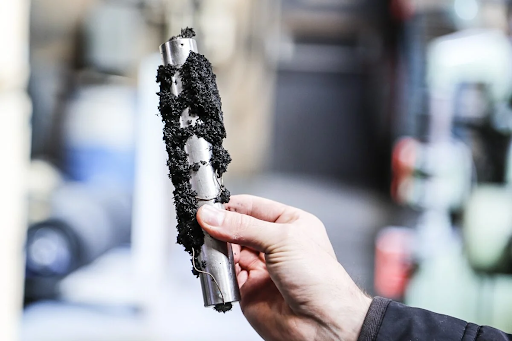When it comes to recycling and reclaiming metal, every step in the process counts. One important step that is often overlooked is the removal of rubber from metal surfaces. Rubber, if left attached to metal, can reduce the efficiency of metal recovery, cause contamination, and increase the cost of processing. By focusing on proper rubber removal, businesses and individuals can ensure that their metal reclaiming process is smoother, cleaner, and more profitable.
Why Rubber Removal from Metal is Important
Rubber often sticks to metal in the form of tires, seals, gaskets, or coated parts. If this rubber is not removed before the metal enters the reclaiming process, it can create several issues. First, it can interfere with the melting or shredding process, making it harder to extract pure metal. Second, leftover rubber can contaminate the final metal product, lowering its quality and value. Third, dealing with rubber contamination after the reclaiming process is much more time-consuming and costly than removing it beforehand. Therefore, proper rubber removal from metal is a critical step for anyone serious about efficient metal recovery.
Methods of Rubber Removal
There are several ways to remove rubber from metal, each suited for different types of materials and operations. Mechanical methods, such as grinding or abrasive blasting, can physically separate rubber from metal surfaces. This method is particularly useful for large, tough pieces of rubber. Chemical methods involve using solvents or special treatments that break down rubber, allowing it to be cleaned off metal more easily. Heat-based methods, such as pyrolysis or controlled burning, can also help in separating rubber, but they require careful handling to prevent damage to the metal and reduce emissions. Selecting the right method depends on the type of metal, the amount of rubber present, and the desired speed of the process.
Benefits of Removing Rubber Before Metal Reclaiming
Removing rubber from metal before the reclaiming process brings multiple advantages. First, it improves the purity of the reclaimed metal. Clean metal melts more efficiently and produces higher-quality end products. Second, it reduces wear and tear on machinery. Rubber left on metal can stick to blades, clog shredders, or coat furnace surfaces, increasing maintenance needs. Third, it enhances operational safety. Rubber residue can cause unexpected reactions during heating or chemical processing, which could pose hazards to workers. By ensuring metal is free from rubber, the overall efficiency, safety, and cost-effectiveness of the metal reclaiming process are greatly enhanced.
Rubber Removal and Environmental Impact
Efficient rubber removal also has environmental benefits. By separating rubber from metal properly, businesses can handle both materials more responsibly. Reclaimed metal can be recycled with minimal contamination, reducing waste and energy use. The separated rubber can also be processed separately for recycling, fuel, or other applications. This dual benefit not only supports sustainability goals but also adds potential value to what would otherwise be considered waste. Thus, investing in rubber removal techniques contributes positively to both business efficiency and environmental responsibility.
Improving Workflow and Productivity
In addition to improving product quality and reducing costs, rubber removal from metal enhances workflow and productivity. When metal enters the reclaiming process already free from rubber, the process becomes faster and smoother. Workers spend less time manually cleaning or handling contaminated metal, and machinery operates more efficiently. Over time, this can significantly boost throughput and reduce bottlenecks in metal reclaiming operations. Companies that prioritize rubber removal often find that their overall process becomes more predictable and manageable, allowing for better planning and higher output.
Conclusion
Rubber removal from metal is more than just a preparatory step; it is an essential part of an efficient and effective metal reclaiming process. By removing rubber before processing, businesses can improve metal purity, reduce machinery damage, increase productivity, and support environmental sustainability. Whether using mechanical, chemical, or heat-based methods, investing in proper rubber removal ensures that the metal reclaiming process is faster, cleaner, and more profitable. Focusing on this often-overlooked step can make a significant difference in the quality and success of metal recycling operations.





